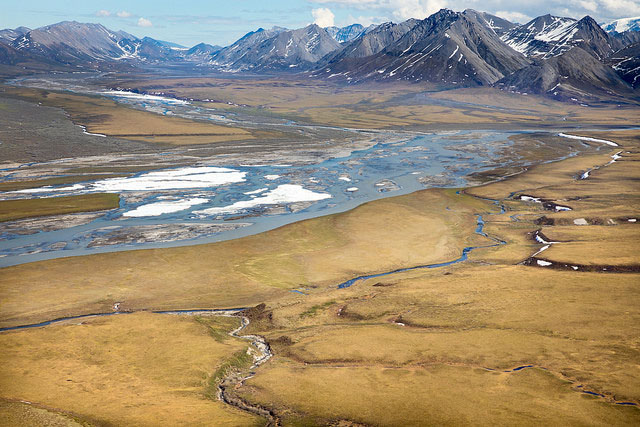
During the final public meeting in Alaska on oil leasing in the Arctic National Wildlife Refuge, a top Interior official said there’s still a possibility that some seismic exploration could be done there this winter.
The statement comes after Interior confirmed last week that the early stage oil exploration effort proposed by company SAExploration was off the table this season. Regulators limit seismic exploration to winter, when snow cover helps protect the tundra. Environmental groups and Gwich’in leaders opposed to oil development in the Refuge celebrated the news — they had raised concerns about seismic exploration’s potential impacts.
But on Monday, the Anchorage Daily News reported that SAExploration is still pursuing work this winter. During a press conference, Interior’s Joe Balash confirmed that there may still be some wiggle room.
“What had been proposed, what a lot of people were talking about in terms of a 1,200 square mile effort, you know, that’s not possible,” Balash said. “And so if that is the term of reference, it’s not happening this year. But is there something that might be salvaged here at the end of the season? Perhaps.”
Balash said SAExploration can’t begin work until it gets a Marine Mammal Protection Act permit from the Fish and Wildlife Service. That process is intended to help protect the Refuge’s polar bear population. Balash said getting the permit involves multiple steps, including a 30-day public comment period that has not yet begun.
The 3-D seismic data SAExploration is pursuing helps oil companies identify the most promising spots to drill. Interior is still hoping to hold an oil lease sale for land in the Arctic Refuge this year, and without seismic data ahead of that lease sale, companies will have less information about where to bid.
Asked how he thinks the lack of 3-D seismic data could impact the lease sale’s results, Balash responded, “There’s no doubt that there will be some companies who look at the sale differently than others, or than they might have if they had had seismic.”
But, he added, “it’s certainly not a regulatory requirement. We don’t have to have seismic to have a lease sale, and we don’t have to have seismic to hold a successful lease sale. You know, commissioner Tom Kelly held the lease sale at Prudhoe Bay without seismic, and they did alright.”
Balash was referring to the 1969 oil lease sale in Alaska, held after the discovery of Prudhoe Bay. That sale brought the state $900 million.
Elizabeth Harball is a reporter with Alaska's Energy Desk, covering Alaska’s oil and gas industry and environmental policy. She is a contributor to the Energy Desk’s Midnight Oil podcast series. Before moving to Alaska in 2016, Harball worked at E&E News in Washington, D.C., where she covered federal and state climate change policy. Originally from Kalispell, Montana, Harball is a graduate of Columbia University Graduate School of Journalism.




